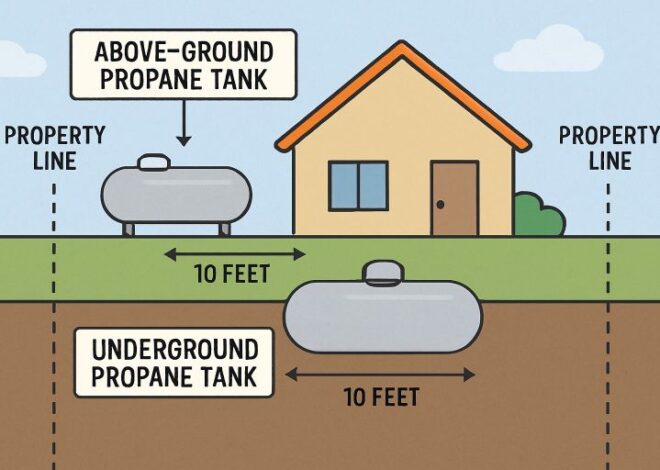
The Comprehensive Guide to Crafting the Perfect Lawn
Key Takeaways
- Understand the basics of lawn care, including soil preparation, seed selection, and watering techniques.
- Learn about common lawn issues and how to address them effectively.
- Discover tips and tricks from experts to maintain a healthy and lush lawn year-round.
- Utilize authoritative resources to expand your knowledge on lawn care topics.
Introduction to Lawn Care Basics
A thriving lawn can indeed be the crown jewel of any property, providing aesthetic appeal and increasing the value of your home. Whether you’re new to lawn care or looking to refine your techniques, understanding the basics forms the foundation of a great lawn. Soil preparation, selecting the right grass seed, and knowing how and when to water are crucial steps you should not overlook. These initial steps set the stage for everything that follows, making it easier to tackle any challenges that come your way. For a more detailed guide on Maine lawn care, visit the experts for state-specific advice.
In Maine, lawn care is a delicate balance between nurturing green spaces and adapting to the region’s unique climate. Summers bring lush growth that requires regular mowing and watering, while the harsh winters demand preparation to protect grass from frost and snow damage. Local expertise often emphasizes organic methods and cold-hardy grass species to maintain vibrant lawns year-round in Maine’s challenging weather conditions.
Soil Preparation
The first step to any flourishing lawn is preparing the soil. Soil testing is vital. It helps determine the pH levels and nutrient needs of your soil, ensuring that you can make the necessary adjustments before planting. Composted organic matter can help with drainage, nutrient content, and soil structure. A pH range that is ideal for grass development can be achieved by adding soil additions like lime or sulfur.
A well-prepared soil bed will encourage healthy root systems, fostering robust grass growth. You can get soil testing kits from local gardening stores, or you might prefer to follow expert advice on how to test soil properly. Investing time and effort into soil preparation lays the groundwork—quite literally—for a lush lawn.
Selecting the Right Grass Seed
Another crucial choice that has a big impact on the look and feel of your lawn is the grass seed you choose. You should take into account the climate, the type of soil, and the daily amount of sunlight your lawn receives. Because of its resilience to shade and longevity, Kentucky Bluegrass and Fine Fescue may be ideal choices for those residing in colder climes. Alternatively, for warmer areas, look into Bermudagrass or Zoysia, which are more heat and drought-resistant.
Understanding the different grass types can help you make an informed decision that best suits your lawn’s specific needs. Consult resources like the expert guides on choosing the best grass seed for detailed information on each type. Making the right choice in grass seed sets the stage for a resilient and attractive lawn.
Watering Techniques
Proper watering can make or break your lawn care efforts. Overwatering or underwatering can both pose risks to your lawn’s health. Typically, it’s best to water early in the morning when the evaporation rates are lower, allowing the water to soak deeply into the soil. Deep watering promotes strong root growth, making your lawn more drought-resistant.
To encourage roots to develop deeper into the soil, make sure to water deeply but less regularly. Watering schedules can be kept regular by using an irrigation system with timers or a soaker hose. Understanding your lawn’s moisture needs and adjusting accordingly will go a long way in keeping your lawn vibrant and healthy throughout the year.
Addressing Common Lawn Issues
Weeds
Weeds are one of the most common lawn issues, competing with your grass for nutrients, water, and sunlight. The best way to control weeds is to promote a healthy lawn through proper mowing, watering, and fertilization. Spot-treating weeds with a selective herbicide can be effective for persistent problems. Besides, thicker turf produced by overseeding your lawn makes it harder for weeds to take root.
Pests
Pests like grubs, ants, and moles can wreak havoc on your lawn. Regular inspection and immediate action are key to preventing damage. Organic solutions like neem oil and beneficial nematodes can offer effective control without harming your lawn. For larger infestations, consulting a lawn care professional may be necessary for targeted treatment. By following the right care instructions, you can keep your lawn healthy and deter pests.
Diseases
Lawn diseases such as brown patches or dollar spots can arise from overwatering, poor soil conditions, and incorrect mowing practices. Improving air circulation through proper mowing and watering techniques can go a long way in preventing these diseases. Additionally, applying fungicides when necessary and maintaining a balanced fertilization schedule can help manage lawn diseases effectively.
Expert Tips for Year-Round Lawn Care
Maintaining a lush lawn year-round requires some expert tips and tricks. For instance, seasonal fertilization schedules can greatly benefit your lawn’s growth and health. Aerating your lawn in the fall can also enhance its ability to absorb nutrients and water, making it more resilient during the harsh winter months.
Other tips include mowing your lawn at the right height for the specific grass type, as well as avoiding mowing when the grass is wet to prevent disease spread. Seasonal guides and expert insights can offer tailored solutions to keep your lawn in its best condition throughout the year.
Conclusion
Crafting the perfect lawn is an ongoing process that involves careful planning, regular maintenance, and staying informed about best practices. You can enjoy a lush, beautiful lawn throughout the year by paying attention to soil health, choosing the right grass seeds, watering correctly, and addressing common issues promptly. Constant learning and adapting to your lawn’s specific needs will ensure that it remains a source of pride and joy for years to come.



